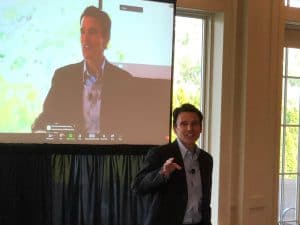Business leaders want the best healthcare for their employees at reasonable prices. But to make that happen, employers must first understand what they’re up against and untangle the Gordian knot that is American healthcare.
Much has been said and written about the U.S. health system—a disparate and disconnected pool of public and private insurers who finance the care-delivery efforts of doctors and other healthcare professionals who work in various settings from hospitals to surgical centers to solo practices. It is an extremely complex and often contentious system that has been known to beat down and burn out even the most dedicated and compassionate healthcare providers.
The rules and cultures of U.S. healthcare
But within this system, there are even more and greater complexities to be found. Among the many healthcare players, you will find myriad different cultures and hundreds of unwritten rules that influence nearly every action taken and every decision made. These are the parts of U.S. healthcare that are kept well-hidden from “outsiders,” including business leaders.
It’s a wonder any company or institution has succeeded in helping employees obtain affordable, accessible, high-quality healthcare. But this week I returned to a place where the healthcare prices are among lowest in U.S., and the quality of care is second to none.
That place is Rochester, New York. There, you’ll find an organization called NorthStar Network, which has spent the last two decades playing the part of “healthcare knowledge partner” to executives and stakeholders throughout the community. Twice a year, NorthStar president and founder Linda Becker hosts events called “Cracking The Code On Healthcare,” designed to pull back the curtain and help local leaders understand (and succeed in) healthcare.
Cracking the code
At the May 12 event, held at the Monroe Golf Club in Pittsford, I had the opportunity to speak about the hidden parts of healthcare—primarily the culture of medicine and the unwritten rules that dictate “the right way” for doctors to act.
In this session, I spoke about the norms, beliefs and values of physicians—both the ones that inspire remarkable medical achievements and those that cause serious harm to both patients and doctors.
I spoke to the advantages of clinical teams over the lone physician working in a doctor’s office. I highlighted the opportunities to pay healthcare professionals and hospitals for the value rather than the volume of care they provide. In addition, I noted the potential of modern technologies, including artificial intelligence and data analytics, and the necessity for effective physician leadership. Finally, I emphasized the importance of breaking the unwritten rules of healthcare in the Covid-19 era, especially the rules against doctors expressing emotion and asking for help. I warned that we are likely to see an epidemic of PTSD among doctors if we don’t confront and address the psychological harm they’ve experienced while watching 1 million Americans die from this disease over the past two years.
 Breaking the rules
Breaking the rules
The unwritten rules of medicine have a tremendous influence over clinician behavior. They aren’t taught in textbooks or lecture halls. Instead, they are observed and subconsciously absorbed by medical students and young doctors whilst learning the ropes and trying to earn the respect of physician leaders.
Most of healthcare’s unwritten rules were established long ago, prior to 21st-century advances in science, technology and medical practice. Many of them are now outdated—obstructing clinical excellence and holding our nation back. Although healthcare professionals object, vocally and appropriately, to a lot of medicine’s written rules, they rarely question or even consciously think about the unwritten ones.
Our nation is currently suffering the consequences of this oversight. Independent research confirms that Americans receive the most expensive and least effective care in the developed world. Medical spending now exceeds $4.1 trillion annually and accounts for 19.7% of the GDP. Despite how much we spend, the quality of U.S. healthcare ranks dead last among wealthy nations. Americans have the lowest life expectancy, worst infant and maternal mortality rates, and highest incidence of chronic disease compared to people in peer countries.
Make no small plans
As a nation, we won’t solve medicine’s cost or quality problems by tinkering at the edges or making small modifications here and there. Instead, we must question the culture of medicine and break the dozens of rules that prevent doctors from delivering great care at reasonable prices.
Breaking these rules won’t be easy. In fact, they’ll be incredibly painful for doctors who I expect will experience all five of the stages of grief that Kubler-Ross described in her research on loss. But as I shared with the audience in attendance, acceptance of today’s new reality will be essential for constructive change to happen.
If you happen to live and work in the Rochester area, I strongly urge you to check out NorthStar Network’s year-long fellowship program. The program brings together executives from throughout the local healthcare value chain. Participants hear from national thought leaders on ways to collaborate, improve the quality and reduce the cost of healthcare in the community. More information here.
* * *
Dr. Robert Pearl is the former CEO of The Permanente Medical Group, the nation’s largest physician group. He’s a Forbes contributor, bestselling author, Stanford University professor, and host of two healthcare podcasts. Pearl’s newest book, “Uncaring: How the Culture of Medicine Kills Doctors & Patients,” is available now. All profits from the book go to Doctors Without Borders.






